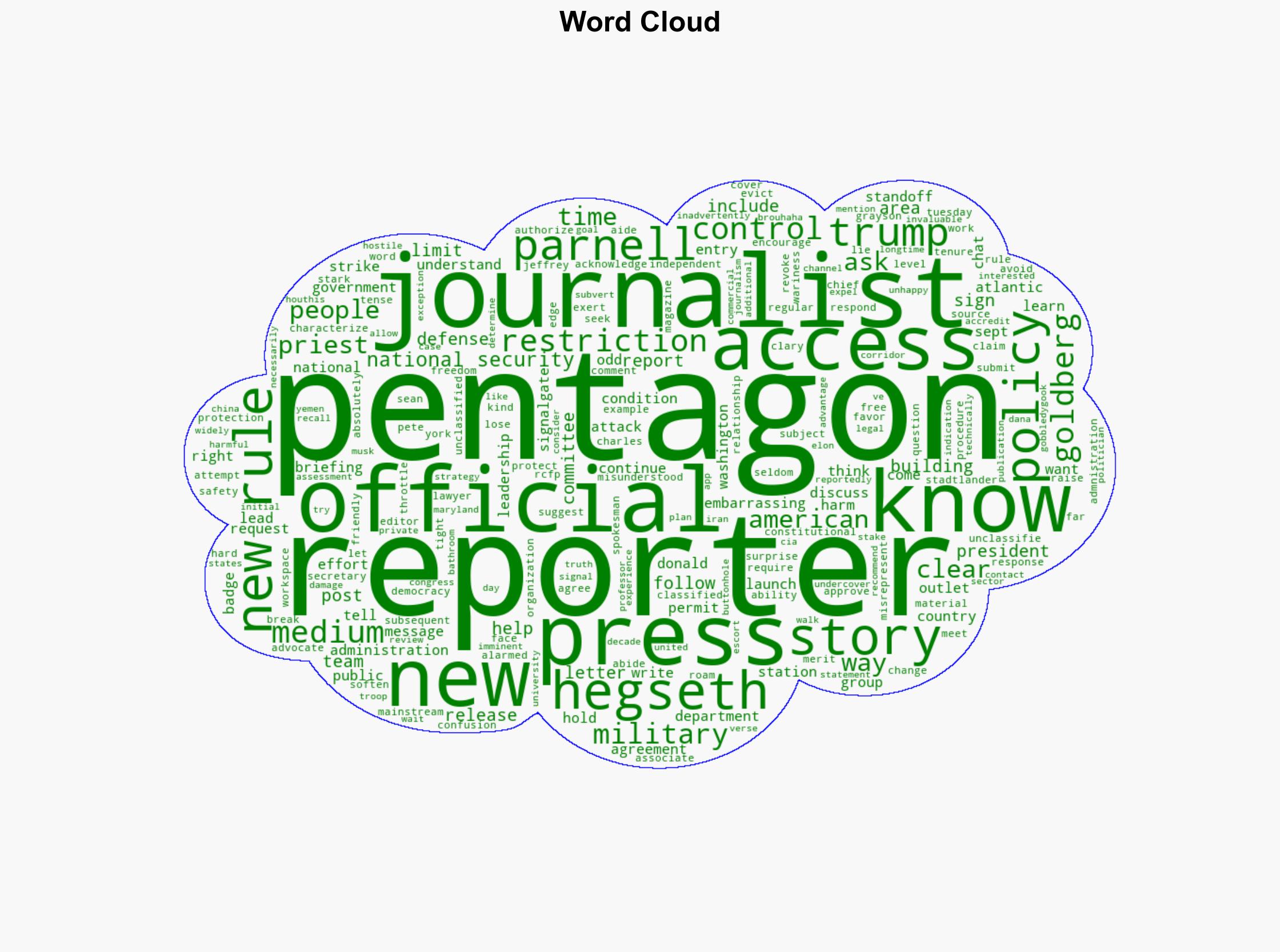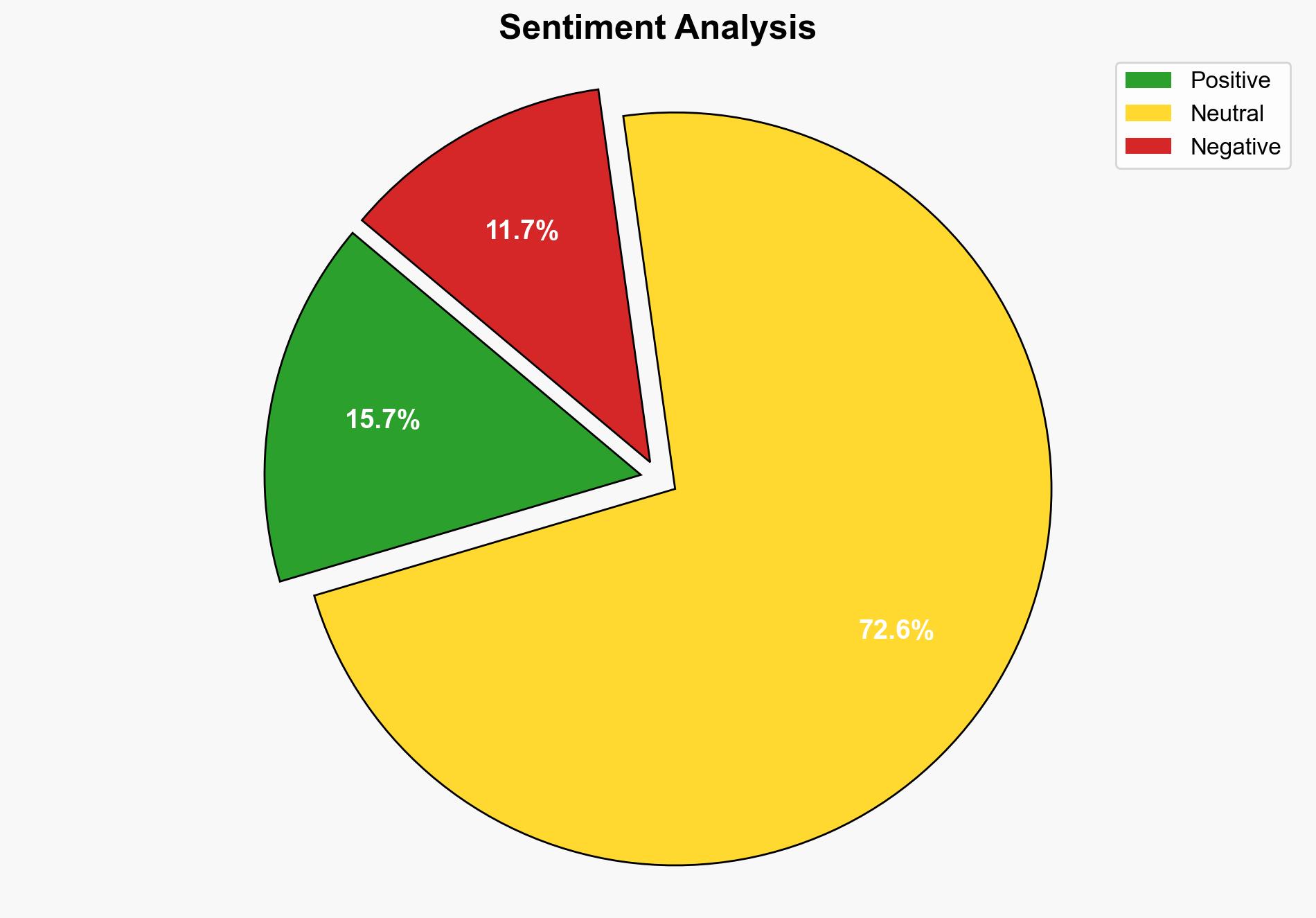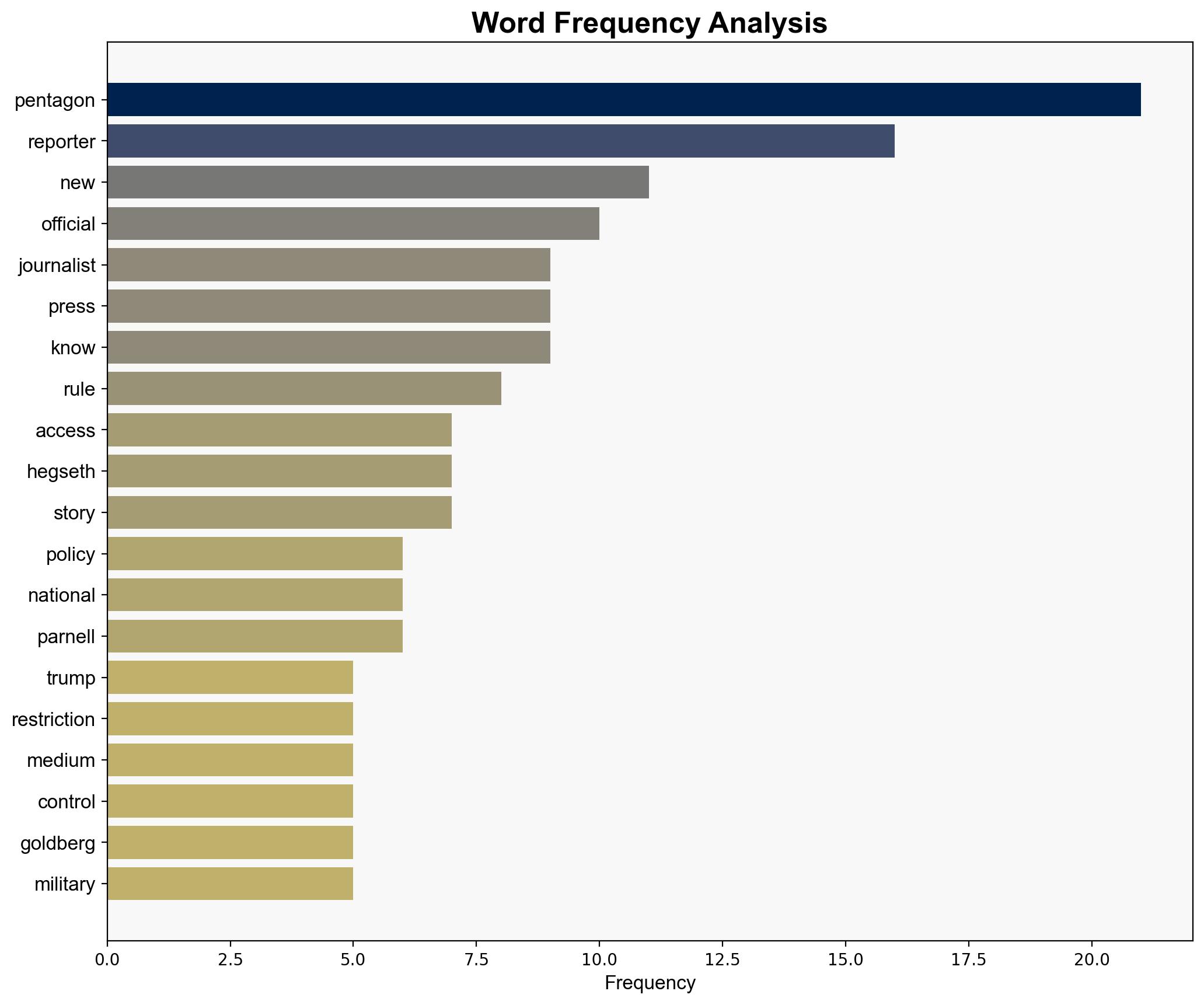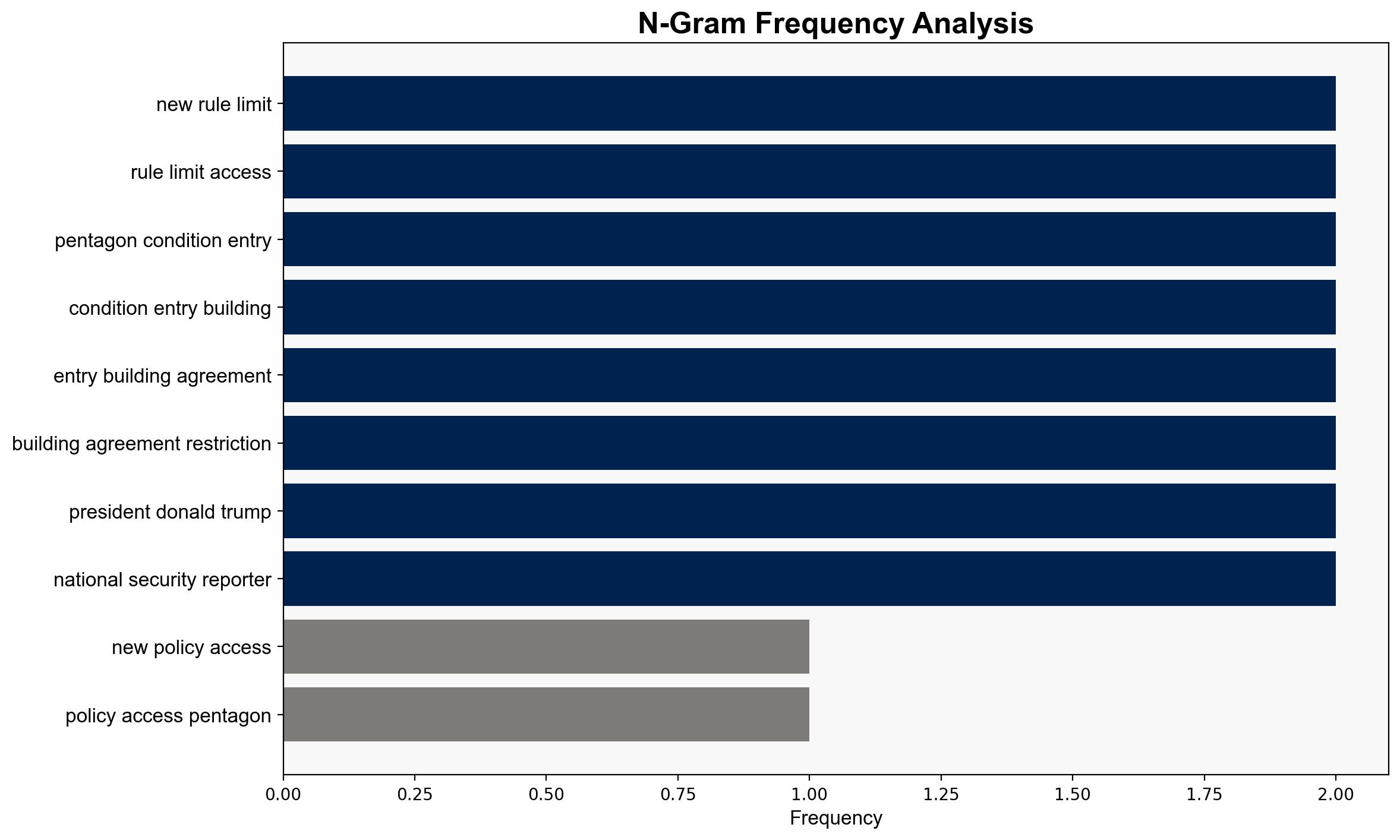A new policy on access at the Pentagon has journalists and the Trump administration at odds – ABC News
Published on: 2025-09-30
Intelligence Report: A new policy on access at the Pentagon has journalists and the Trump administration at odds – ABC News
1. BLUF (Bottom Line Up Front)
The most supported hypothesis is that the new Pentagon policy is primarily an effort by the Trump administration to exert greater control over media narratives and limit potentially embarrassing stories. Confidence level: Moderate. Recommended action: Monitor the implementation of the policy for further restrictions and assess its impact on press freedom and public transparency.
2. Competing Hypotheses
1. **Hypothesis A**: The new policy is a genuine effort to enhance national security by controlling the release of sensitive information and ensuring that journalists adhere to stricter guidelines.
2. **Hypothesis B**: The policy is primarily a strategic move by the Trump administration to control media narratives, limit negative press, and manage public perception by restricting journalist access to the Pentagon.
Using the Analysis of Competing Hypotheses (ACH) method, Hypothesis B is better supported due to the historical context of the administration’s contentious relationship with the media and the specific mention of efforts to avoid “embarrassing stories.”
3. Key Assumptions and Red Flags
– **Assumptions**:
– Hypothesis A assumes that the primary motivation is national security without ulterior motives.
– Hypothesis B assumes that the administration has a vested interest in controlling media narratives beyond security concerns.
– **Red Flags**:
– Lack of clarity in the policy’s language could lead to misinterpretation.
– Potential bias in the source, given the contentious relationship between the administration and the media.
– **Blind Spots**:
– The policy’s long-term impact on press freedom and public access to information is not fully explored.
4. Implications and Strategic Risks
– **Patterns**: This policy fits a broader pattern of the administration’s attempts to manage media narratives.
– **Cascading Threats**: Restricting press access could lead to increased misinformation and reduced public trust in government transparency.
– **Potential Escalation**: Continued tension between the media and the administration could escalate into legal challenges or further restrictions on press freedom.
– **Geopolitical Dimension**: International perception of U.S. press freedom could be negatively impacted, affecting diplomatic relations.
5. Recommendations and Outlook
- Monitor the policy’s implementation and its effects on media access and reporting quality.
- Engage with media advocacy groups to assess the policy’s impact on press freedom.
- Scenario Projections:
– **Best Case**: Policy is clarified and adjusted to balance security with press freedom.
– **Worst Case**: Further restrictions lead to significant erosion of press freedom and public transparency.
– **Most Likely**: Continued tension with incremental adjustments to the policy based on media and public feedback.
6. Key Individuals and Entities
– Pete Hegseth
– Sean Parnell
– Charles Stadtlander
– Jeffrey Goldberg
– Grayson Clary
– Dana Priest
7. Thematic Tags
national security threats, media control, press freedom, government transparency





